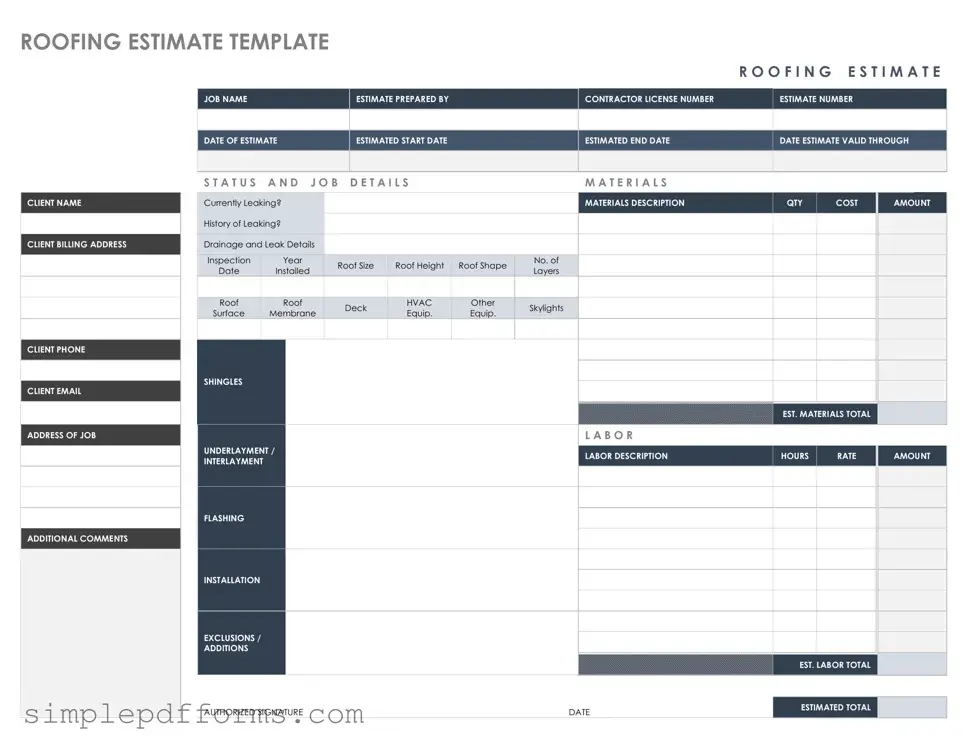Filling out a Roofing Estimate form can seem straightforward, but there are several common mistakes that people often make. These errors can lead to delays, miscommunication, or even inaccurate estimates. Understanding these pitfalls can help ensure a smoother process and a more accurate assessment of roofing needs.
One frequent mistake is providing incomplete information. When homeowners skip sections or leave out crucial details, it can hinder the contractor's ability to offer a precise estimate. For instance, not specifying the type of roofing material desired or neglecting to mention existing damage can result in unexpected costs later on. It’s essential to take the time to fill out every section thoroughly.
Another common error involves overlooking the importance of accurate measurements. Many people underestimate the size of their roof or fail to measure it entirely. This can lead to significant discrepancies in the estimate. Using a ladder and a measuring tape can provide a more accurate picture, ensuring that the contractor has the correct dimensions to work with.
Some individuals also forget to include details about the roof's current condition. This includes noting any leaks, sagging areas, or previous repairs. By not providing this information, homeowners risk receiving an estimate that doesn’t account for necessary repairs. Being transparent about the roof’s condition can save time and money in the long run.
Additionally, failing to communicate specific preferences can lead to misunderstandings. For example, if a homeowner prefers energy-efficient materials or a particular style, this should be clearly stated on the form. Without this information, the contractor may provide options that do not align with the homeowner's vision, leading to frustration and potential delays.
Moreover, many people neglect to ask questions or clarify terms they do not understand. The Roofing Estimate form may include technical terms or industry jargon that can be confusing. Homeowners should feel empowered to seek clarification. A brief conversation with the contractor can help ensure everyone is on the same page.
Lastly, not reviewing the completed form before submission is a mistake that can easily be avoided. Taking a moment to double-check the information can help catch any errors or omissions. This final review can make a significant difference in the accuracy of the estimate and the overall experience.

